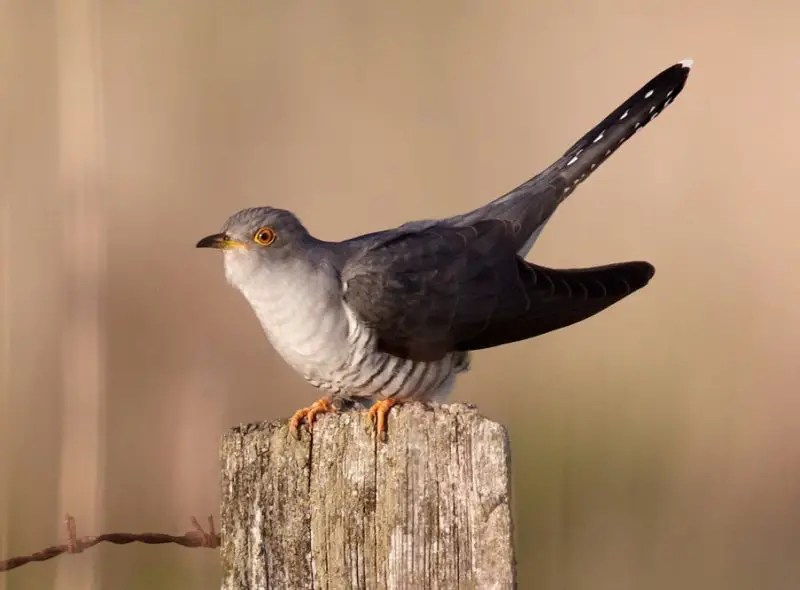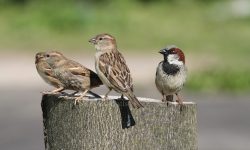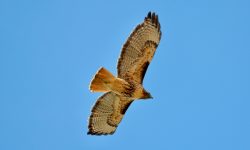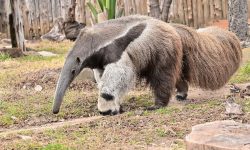Every spring, a familiar two-note call drifts through the woodlands and meadows of Europe and Asia: “cuck-oo, cuck-oo.” It’s a sound that signals the return of a bird steeped in mystery, folklore, and evolutionary brilliance. The Common Cuckoo (Cuculus canorus) is no ordinary bird. It’s a specialist in deception — a creature that outsources parenthood by laying its eggs in the nests of other birds.
While most birds build nests, raise chicks, and fiercely protect their young, the Common Cuckoo flips the rules upside down. With a combination of egg mimicry, visual trickery, and ruthless instinct, it has mastered one of the most fascinating reproductive strategies in the animal kingdom: brood parasitism.
Let’s explore what makes this species so extraordinary — from its cunning nesting behavior to its ghost-like migration across continents.

The Bold Behaviors and Biology of the Common Cuckoo
Brood Parasitism: Why Raise Young When Others Can Be Tricked?
The Art of Deception: How Brood Parasitism Works
While most birds dedicate weeks or months to building nests, incubating eggs, and feeding chicks, the female Common Cuckoo takes a radically different route. Instead of parenting, she becomes a silent observer — lurking from the shadows and watching the daily routines of smaller birds such as Reed Warblers, Dunnocks, and Pied Wagtails.
She bides her time with surgical precision. Once she identifies a suitable nest and confirms that the host has laid a few eggs, she waits for a fleeting window — perhaps when the host is off foraging. Then, in a burst of stealth and speed, the female Cuckoo dives into the nest, removes one egg, lays her own, and vanishes — all within 10 seconds.
To the unsuspecting host, everything looks normal. The number of eggs hasn’t changed. But one of them carries the genetic legacy of a different species — one that will soon hijack the entire nest.
Why Don’t Host Birds Notice the Difference?
The success of the Cuckoo’s trickery lies in a remarkable feat of evolutionary mimicry. Over countless generations, female Cuckoos have developed the ability to lay eggs that closely match the color, speckling, and size of their host’s eggs. This form of disguise is so specialized that individual females often parasitize only one host species, forming what scientists call “gentes” — distinct genetic lines of Cuckoos adapted to deceive specific birds.
Despite the host bird’s natural instincts to protect its own brood, the camouflage usually works. Many hosts can’t tell the difference, and those that do sometimes hesitate to eject the foreign egg, fearing a mistake. By the time they realize something’s wrong, the Cuckoo chick has hatched — and the real drama begins.
A Ruthless Beginning: The Cuckoo Chick’s First Instinct
The moment a Cuckoo chick hatches — often earlier than the host’s own eggs — it embarks on a brutal mission. Blind, naked, and barely able to lift its head, the chick already possesses a powerful instinct: to eliminate its rivals. With deliberate movements, it wriggles beneath the remaining eggs or chicks and heaves them over the edge of the nest using its back and wings.
By the end of its first day, the nest holds only one chick: the Cuckoo. Alone in the nest, it monopolizes the care of the host parents, who continue to bring food as if they were feeding their own offspring — unaware that they’ve lost their entire brood.
This stark behavior may seem shocking, but it’s a finely tuned survival mechanism. Without competition, the young Cuckoo can grow rapidly, sometimes reaching a size more than twice that of its foster parents, who continue feeding it tirelessly until it fledges.
A Predator in Disguise: How the Cuckoo Looks Like a Hawk
The Common Cuckoo’s deception extends beyond its eggs. Adults have evolved to look like predators — specifically, the Eurasian Sparrowhawk, a bird feared by many small songbirds. With its long tail, pointed wings, slate-gray plumage, and barred underside, the Cuckoo closely resembles this raptor in flight.
This mimicry is no coincidence. When host birds see a figure that resembles a hawk near their nest, they often flee in panic, leaving the nest unguarded. This gives the female Cuckoo the perfect opportunity to swoop in and plant her egg without resistance.
It’s an elegant layer of visual trickery — one that adds to the Cuckoo’s reputation as a master of illusion.
The Spring Song That Inspired a Clock
While female Cuckoos are mostly silent, males fill the spring air with their iconic two-note call: “cuck-oo, cuck-oo.” Heard across Europe and parts of Asia, this simple melody is so distinctive that it gave the species its name in multiple languages — and inspired the invention of the cuckoo clock.
This call isn’t just musical; it’s functional. It serves as a territorial signal and mating call, helping males attract females and warn off rivals. In many cultures, the first call of the Cuckoo each year is associated with springtime, luck, or even love.
Few birds have left such a lasting imprint on human imagination — not for their feathers, but for their voice.
A Natural Navigator: The Cuckoo’s Epic Migration
Each year, after the breeding season ends, Common Cuckoos disappear from Europe and Asia, embarking on one of the most remarkable migrations in the bird world. They travel thousands of kilometers to sub-Saharan Africa, crossing mountains, deserts, and oceans — alone.
Unlike many migratory birds, Cuckoos receive no guidance from their parents, as they’re raised by foster species. Yet they follow ancient migration routes, likely using celestial cues, magnetic fields, and internal compasses to guide them.
Tracking studies have shown that some individuals travel over 10,000 kilometers, stopping in multiple countries along the way. Their ability to make this journey — instinctively — is a testament to the power of genetic memory and natural engineering.
A Vanishing Voice: Why the Cuckoo Is Declining
Despite its intelligence and adaptability, the Common Cuckoo is in serious decline in parts of its range, especially in Western Europe. The reasons are complex but interconnected:
-
Habitat loss has reduced the number of host species and suitable nesting grounds
-
Agricultural intensification has removed key features like reed beds and meadows
-
Climate change has caused a mismatch in timing: Cuckoos arrive to breed but find that host birds have already finished nesting
These changes threaten the delicate balance that has sustained this bird’s reproductive strategy for centuries. Conservation efforts now focus on protecting open habitats, preserving the health of host bird populations, and understanding how climate shifts affect interspecies interactions.
Conclusion: A Bird That Redefines Parenthood
The Common Cuckoo is not just a curiosity — it’s a case study in evolutionary adaptation, survival strategy, and ecological balance. Its brood parasitism, far from being cruel, is a brilliant solution to the challenges of reproduction. Through mimicry, instinct, and innovation, the Cuckoo has carved out a niche that very few animals occupy.
While it may seem heartless to abandon one’s offspring, the Cuckoo reminds us that nature’s rules are rarely moral — but they are always effective. And in the world of birds, no species breaks the mold quite like the Common Cuckoo.






